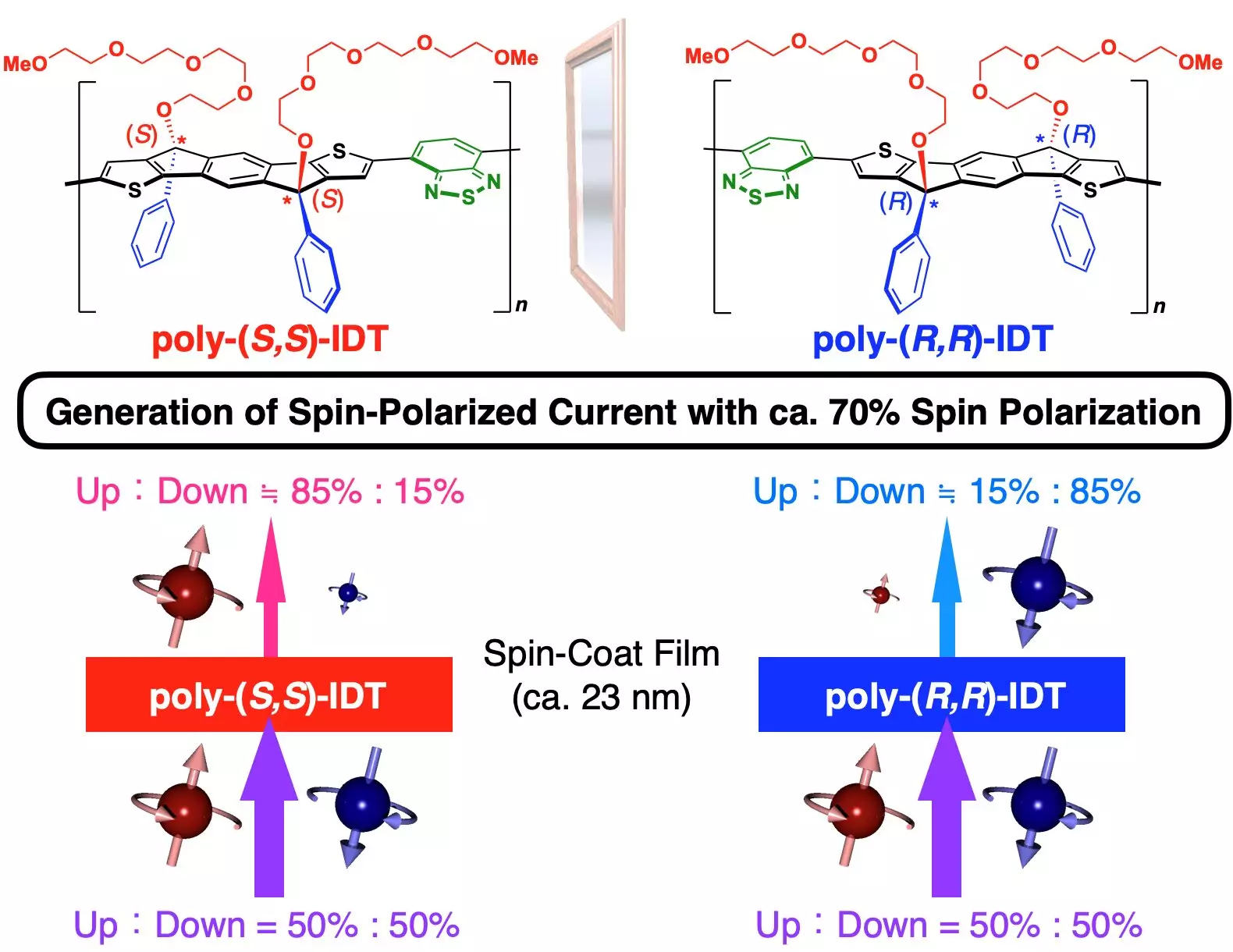Chirality is an intrinsic feature of certain molecules, akin to the distinction between left and right hands. Although these chiral molecules share identical components, their mirrored configurations can lead to dramatically different interactions with light, electrical currents, and magnetic fields. This defining characteristic has opened a frontier in materials science, particularly within the context of spintronics—a revolutionary approach to electronics that capitalizes on the spin of electrons as opposed to merely their charge.
Recently, a groundbreaking study by a team from Osaka University has illuminated the potential of chiral copolymer films, which can function as effective spin filters. By developing a process that enables the creation of spin-coated films with notable chirality, the researchers have taken a significant step towards enhancing the performance and applicability of devices in this burgeoning field.
Advancements in Copolymer Film Synthesis
The innovative synthesis of chiral copolymers at Osaka University involved employing a chiral indacenodithiophene (IDT) derivative as a monomer unit. This molecule not only imparts chirality to the copolymer but also enhances its electronic properties. The copolymers were designed specifically to exhibit chirality-induced spin selectivity (CISS), which has been shown to facilitate the generation of spin-polarized currents—a fundamental requirement in spintronic devices. By utilizing a simplified spin-coating technique, the researchers have minimized the complexity typically associated with producing high-performance polymer films.
The research team’s ability to generate films displaying these distinct properties with ease suggests a pivotal advancement in the creation of materials suitable for practical applications within the spintronics sector. The findings were articulated through meticulous experimental procedures, including the use of atomic force microscopy to accurately gauge the CISS and analyze the films’ responses to polarized currents.
Implications for Future Technologies
The results achieved in this study are impressive, with the IDT copolymer films demonstrating a spin polarization rate nearing 70%. This places them among the most effective chiral polymers explored thus far. Such a high degree of chirality-driven spin selectivity provides the potential for these films to not only serve as spin filters but also to become fundamental components in future electronic devices that leverage both charge and spin for enhanced functionality.
As the research field progresses, the impact of these findings could resonate beyond spintronics, with possible implications in advanced clean energy technologies that utilize spin-polarized currents. The advancements from Osaka University bring us closer to realizing practical and efficient applications of chiral polymers, paving the way for next-generation electronic systems.
The study not only showcases the unique properties of chiral molecules but also highlights the innovative spirit within materials science. The ongoing exploration of chirality’s effects on electron behavior is poised to inspire transformative changes across various sectors, eventually leading to more sustainable and high-performing electronic devices.


Leave a Reply